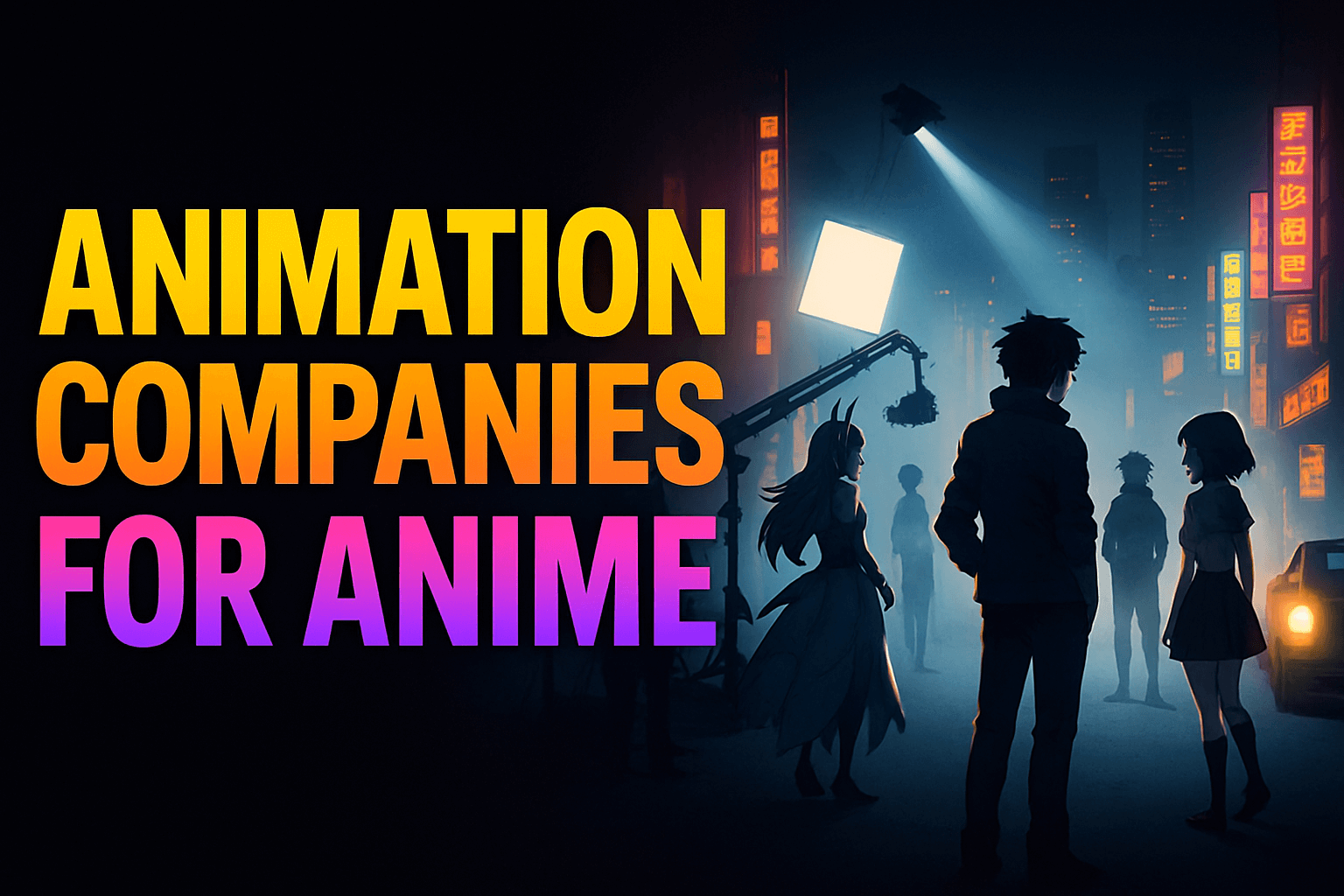Animation Companies for Anime: An Executive’s Guide

Introduction
When an M&E executive searches for “animation companies anime,” they are not looking for a fan-centric list of famous studios. They are seeking a strategic partner.
The global anime market, valued at approximately US$33.25 billion in 2024, is a hotbed of opportunity for co-productions, acquisitions, and distribution deals (Grand View Research, 2024). However, making a successful partnership is a complex endeavor that requires moving beyond a studio’s public reputation.
It demands an understanding of the intricate business structures and deal-making histories that are not visible to the average consumer. My analysis shows that success in this market is determined by a firm’s ability to identify and vet the right partners, not just by having a list of the biggest names.
Table of content
- The Executive’s Challenge: Beyond the Studio Name
- The New Paradigm: A Data-Driven Approach to Partner Discovery
- A Strategic Framework for Vetting Animation Companies Anime
- How Vitrina Transforms Your Anime Partner Strategy
- Conclusion: A Strategic Approach to Working with Animation Companies Anime
- Frequently Asked Questions
Key Takeaways
| Core Challenge | Finding the right anime production partner is not about finding famous studios; it’s about vetting their deal history, production capacity, and place within a complex “production committee.” |
| Strategic Solution | A data-driven approach allows you to identify and connect with the right companies and executives for co-productions, licensing, and distribution. |
| Executive Insight | Navigating the anime industry requires a shift from consumer-level knowledge to an intelligence-led strategy focused on the business supply chain. |
The Executive’s Challenge: Beyond the Studio Name
For an M&E executive, the challenges of engaging with animation companies anime go far beyond identifying who animated a popular series. The true pain points are rooted in a lack of visibility into the industry’s intricate business ecosystem.
A studio like MAPPA or Toei Animation is a well-known name, but they are often just one part of a much larger, more complex “production committee.” This committee is a joint venture of various companies—publishers, broadcasters, financiers, and distributors—that pool resources to fund a project and share in its profits. This structure makes it incredibly difficult to:
- Identify the Right Partner: The animation studio itself may not hold the rights to a project or be the primary decision-maker for co-production. To strike a deal, you must identify who is on the production committee, who holds the rights, and which executives are responsible for business development.
- Assess Deal History and Financial Health: Without a centralized source of truth, it is nearly impossible to vet a studio’s track record. What projects have they truly led? What kind of deals do they prefer? Public information rarely reveals their full deal-making history or financial viability, leaving executives to make critical decisions with incomplete data.
- Map the Supply Chain: The anime industry is a fragmented, relationship-based market. Finding a studio is one thing; finding a studio that has a pre-existing relationship with the distribution partner you need is another. Manual research, relying on public-facing sites or personal contacts, is simply not scalable for a global market.
This is where the traditional, fan-based approach to finding a studio falls apart. Executives cannot afford to rely on brand recognition alone. They need a systematic, data-driven method to uncover the business intelligence that matters for high-stakes deal-making.
The New Paradigm: A Data-Driven Approach to Partner Discovery
In my analysis, the most successful strategy for engaging with animation companies anime is a proactive, intelligence-led approach. It requires executives to adopt a new framework that prioritizes verified data over public-facing information. This framework involves three core pillars:
- Global Supply Chain Mapping: Instead of just searching for studio names, you must map the entire supply chain. This means identifying the publishers who own the original IP, the broadcasters who fund projects, and the distributors who release content globally. A successful deal often begins with a firm that is not a traditional studio.
- Deep Profiling and Vetting: Once you have a list of potential partners, you must vet them comprehensively. This goes beyond a simple portfolio review. You need to see their full deal history—every co-production, every licensing deal, every key project they’ve been involved in—to understand their strengths and weaknesses.
- Proactive Pipeline Management: The anime industry is in a state of constant change. A successful business development strategy requires real-time intelligence on new projects, key personnel changes, and emerging trends. This allows you to build a proactive pipeline of qualified leads, rather than waiting for an opportunity to arise.
A Strategic Framework for Vetting Animation Companies Anime
To move beyond simple brand recognition and truly find the right animation companies anime for your business, I recommend a structured vetting process. This framework ensures you make decisions based on verifiable business intelligence, not just on a studio’s most famous works:
- Identify the True Decision-Makers: The first step is to identify the full “production committee” behind a project. Who are the financiers? The publishers? The broadcasters? These are often the key players who can greenlight a co-production or distribution deal.
- Analyze Deal History & Trends: Look for patterns in a company’s past deals. Do they specialize in acquiring certain genres? Do they favor co-productions with partners from specific regions? This analysis reveals their business strategy and helps you determine if your project is a good fit.
- Map Relationships and Connections: The anime world is driven by relationships. You need to know which companies frequently collaborate, which executives have a strong track record, and how a potential partner fits into the broader network. This intelligence can significantly de-risk a partnership and accelerate the deal-making process.
How Vitrina Transforms Your Anime Partner Strategy
Vitrina is a system built specifically to address the pain points of a senior executive looking to engage with animation companies anime. It’s not a fan database; it is a native, intelligence-driven platform designed to serve as a single source of truth for business development and deal-making. For an executive, Vitrina’s core capabilities are a game-changer:
- Comprehensive Company & Executive Profiling: Our database profiles over 350,000 companies and 3 million individuals. You can search for studios and production committees by their verified credits, past projects, and their specific roles in the supply chain. This allows for unparalleled precision in finding the right partner.
- Global Project Tracking: Our Film+TV Projects Tracker provides real-time alerts on what companies are acquiring, producing, and releasing. You can track a project from its initial announcement to its release date, identifying every company and executive involved along the way.
- Relationship Mapping: With Vitrina’s deep-profiling capabilities, you can see the full deal-making history between companies, revealing hidden networks and collaboration patterns that are invisible to the public. This empowers you to approach a potential partner with an informed, strategic pitch.
Conclusion: A Strategic Approach to Working with Animation Companies Anime
The global anime market is a fertile ground for growth, but it is also a landscape of complex business structures and hidden networks.
For a senior M&E executive, the key to success is not in knowing the most famous animation companies anime but in understanding the underlying business intelligence that drives the industry.
By adopting a data-driven strategy and leveraging a platform that provides a single, unified view of the supply chain, you can move from a reactive, scattershot approach to a proactive, strategic one.
The time to consolidate your data and streamline your deal flow is now.Sign-up Today
Frequently Asked Questions
A production committee is a joint venture of various companies—including publishers, broadcasters, and financiers—that come together to fund, manage, and distribute an anime project. The animation studio is typically one member of this committee but not always the primary decision-maker.
Information on production committees is often fragmented and can be found in the credits of a series or on public databases. However, a market intelligence platform like Vitrina provides a unified and verified view of every company and executive involved in a project from its earliest stages.
An animation studio is responsible for the physical animation and creative execution of a project. A production company (or a production committee) is the business entity that finances, manages, and distributes the project. The two often work together, but they have distinct roles in the supply chain.
According to research, the global anime market is growing rapidly, making co-production a viable investment strategy. However, success depends on partnering with the right companies who have a proven track record. It is critical to use market intelligence to vet potential partners and understand the full deal history of their past projects.

























